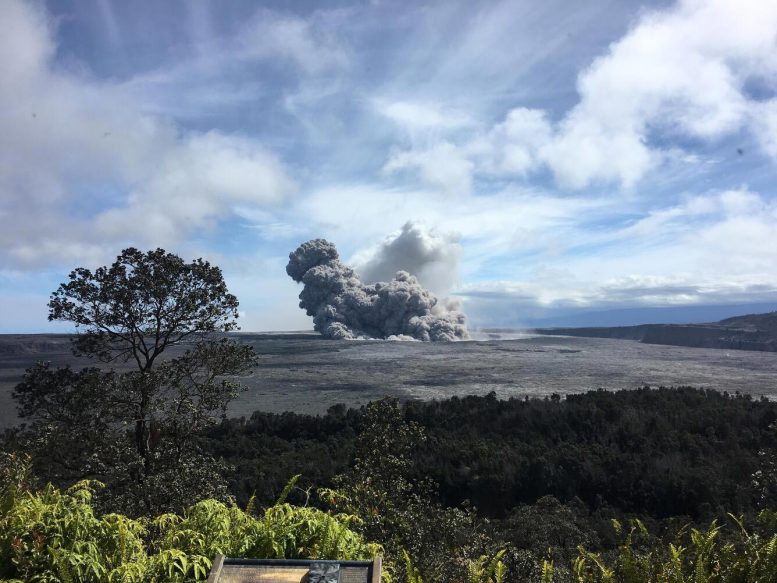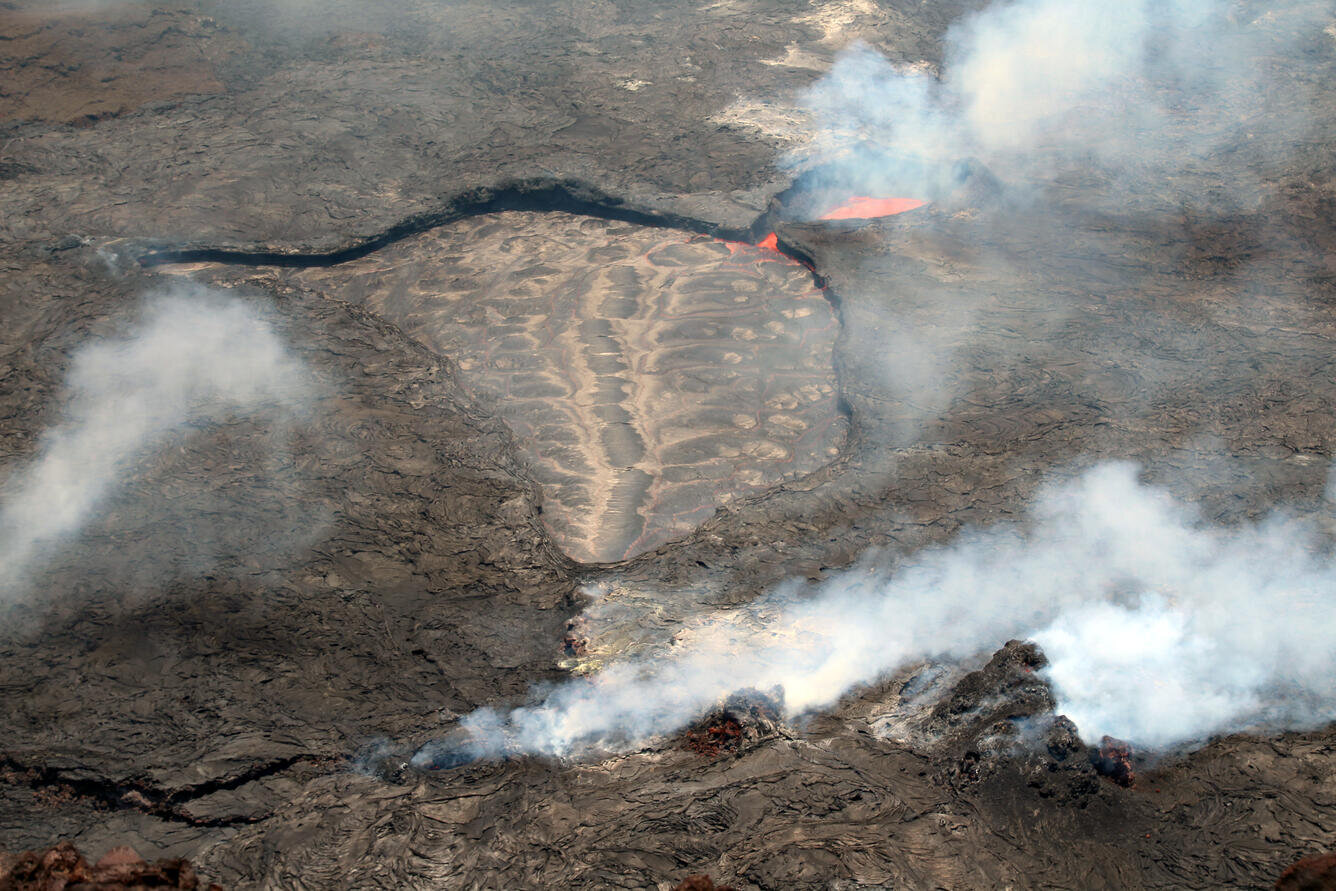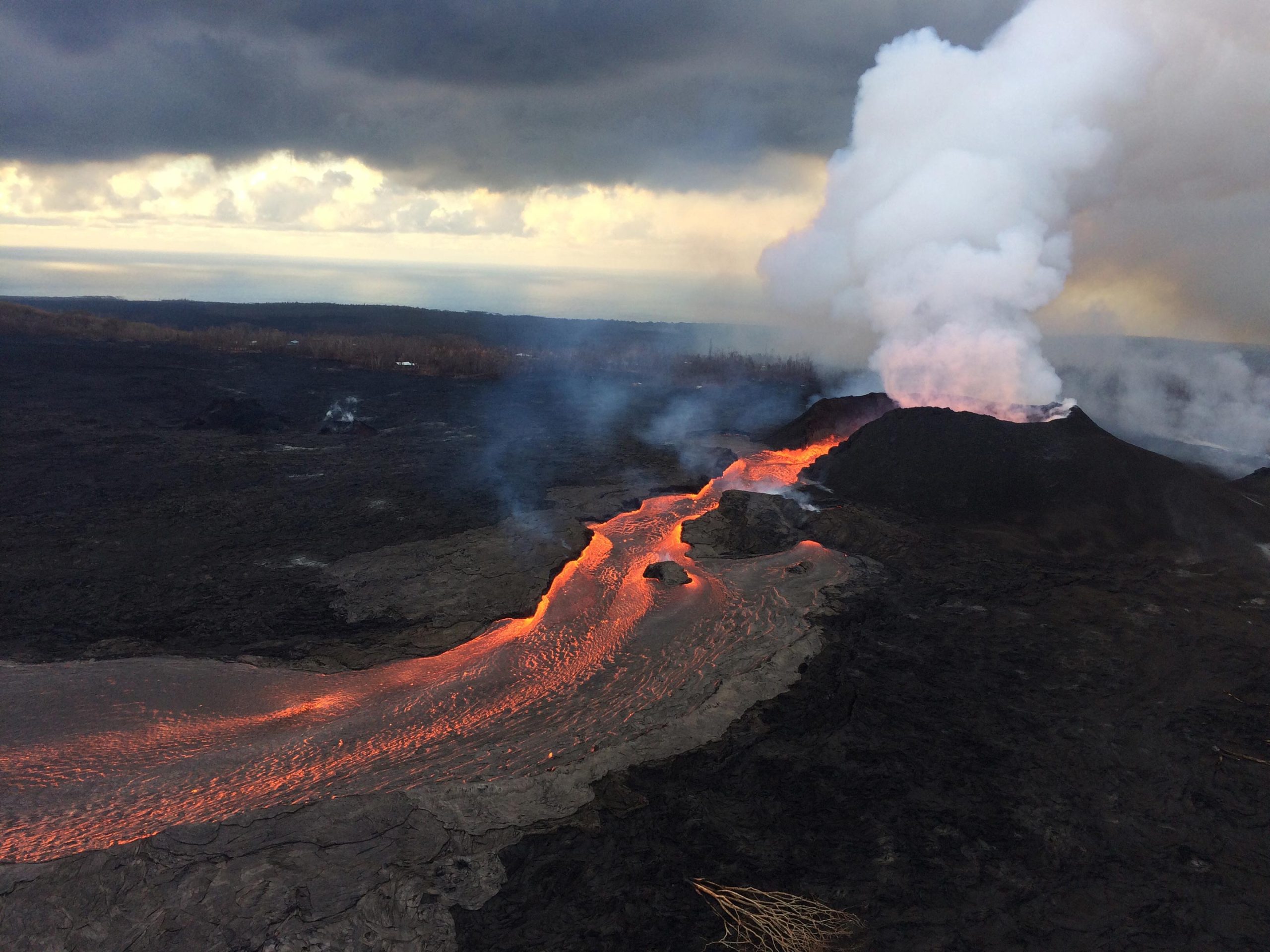
Kilauea Volcano, located on the Big Island of Hawaii, experienced a series of explosive eruptions in 2018 that did not fit into the typical categories of magma or groundwater-driven eruptions. These unique events were driven by sudden pressure increases caused by ground collapse and have been described as a new type of volcanic eruption mechanism called the 'stomp-rocket mechanism'.
According to research published in various sources including Nature Geoscience, IRIS, USGS, NOAA, NCEP/NCAR and National Park Service, these explosions were not caused by fresh magma or significant groundwater. Instead, they were driven by the collapse of a magma reservoir that caused an increase in pressure within the reservoir. A pocket of accumulated magmatic gas at the top of this reservoir was then squeezed, forcing material through a conduit and blasting it out of Kilauea's crater.
The researchers compared this eruption dynamic to a stomp-rocket toy, where stepping on an air bag connected to a hose launches a projectile into the air. The 12 explosive eruptions that occurred in 2018 fit into this new category and were analyzed by researchers from the University of Oregon, United States Geological Survey, and China's Sichuan University.
The data for this study is available through various sources including IRIS, USGS, NOAA, NCEP/NCAR and National Park Service. Codes for the study are available upon request to the corresponding author following USGS software management policies. References for the article include works by Carey & Bursik, Macedonio et al., Gonnermann & Taisne, Barberi et al., Neal et al., and Anderson et al.








